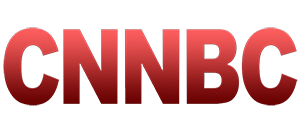Trump's Oval Office Appearances Transform Presidential Communication
An examination of President Donald Trump's almost daily press briefings from the Oval Office and their effects on the White House's communication strategy.
WASHINGTON, Feb 16 (Reuters) - Since his return to the White House, President Donald Trump has significantly increased his public engagements, holding nearly daily press briefings from the Oval Office.
In the last four weeks, Trump has held 34 press sessions, with 16 occurring in the historic office, a notable rise compared to his first term.
Presidential scholar Martha Joynt Kumar notes that this frequency is considerably higher than that of President Joe Biden, who conducted 22 Q&A sessions, nine of which took place from the Oval Office at a similar point in his presidency.
This change in communication strategy positions the president as his own chief spokesperson, a point emphasized by White House press secretary Karoline Leavitt during her briefing on January 28. Leavitt highlighted that both the president and his office are committed to maintaining regular interactions with the media.
This approach underscores the symbolic importance of the Oval Office, a space adorned with presidential portraits and the historic Resolute Desk, used by multiple presidents and central to these briefings.
During these sessions, President Trump has tackled various topics, including updates on Ukraine and Gaza, economic strategies, and domestic policies.
At one point, he announced talks with Russian President Vladimir Putin about a possible summit to resolve the Ukraine crisis.
He also addressed issues concerning Palestinian refugees and geopolitical topics related to Jordan.
His comments have included expressions of personal preferences, such as his well-known dislike for paper straws and the reinstatement of certain amenities from his previous term.
The president's communication style has been compared to that of his predecessor.
Notably, Trump's frequent appearances in the Oval Office stand in stark contrast to President Biden's more restricted and controlled media engagements, which often consist of scripted speeches delivered from various public areas of the White House.
Commentators like presidential historian Douglas Brinkley have remarked that this method signifies an unprecedented use of the Oval Office as a platform for immediate communication.
Access to these sessions is governed by the president's terms.
The White House has placed limitations on media access at times, as evidenced by a recent decision to exclude Associated Press reporters following an editorial choice made by the agency concerning geographical labeling.
The White House Correspondents’ Association, along with other press organizations, has expressed concerns regarding such limitations.
These Oval Office briefings are frequently designated as “closed press” on the daily agenda; however, last-minute adjustments by the president’s team often permit journalists to attend.
In a recent occurrence, the press was summoned into the Oval Office on short notice to cover remarks made to Jordan’s King Abdullah regarding the country's position on accepting Palestinian refugees.
Trump’s approach to direct communication from the Oval Office aims to reinforce his presidential authority.
The frequency and style of these sessions illustrate an effort to manage the narrative and connect directly with the public, marking a notable evolution in the White House’s communication strategies.
In the last four weeks, Trump has held 34 press sessions, with 16 occurring in the historic office, a notable rise compared to his first term.
Presidential scholar Martha Joynt Kumar notes that this frequency is considerably higher than that of President Joe Biden, who conducted 22 Q&A sessions, nine of which took place from the Oval Office at a similar point in his presidency.
This change in communication strategy positions the president as his own chief spokesperson, a point emphasized by White House press secretary Karoline Leavitt during her briefing on January 28. Leavitt highlighted that both the president and his office are committed to maintaining regular interactions with the media.
This approach underscores the symbolic importance of the Oval Office, a space adorned with presidential portraits and the historic Resolute Desk, used by multiple presidents and central to these briefings.
During these sessions, President Trump has tackled various topics, including updates on Ukraine and Gaza, economic strategies, and domestic policies.
At one point, he announced talks with Russian President Vladimir Putin about a possible summit to resolve the Ukraine crisis.
He also addressed issues concerning Palestinian refugees and geopolitical topics related to Jordan.
His comments have included expressions of personal preferences, such as his well-known dislike for paper straws and the reinstatement of certain amenities from his previous term.
The president's communication style has been compared to that of his predecessor.
Notably, Trump's frequent appearances in the Oval Office stand in stark contrast to President Biden's more restricted and controlled media engagements, which often consist of scripted speeches delivered from various public areas of the White House.
Commentators like presidential historian Douglas Brinkley have remarked that this method signifies an unprecedented use of the Oval Office as a platform for immediate communication.
Access to these sessions is governed by the president's terms.
The White House has placed limitations on media access at times, as evidenced by a recent decision to exclude Associated Press reporters following an editorial choice made by the agency concerning geographical labeling.
The White House Correspondents’ Association, along with other press organizations, has expressed concerns regarding such limitations.
These Oval Office briefings are frequently designated as “closed press” on the daily agenda; however, last-minute adjustments by the president’s team often permit journalists to attend.
In a recent occurrence, the press was summoned into the Oval Office on short notice to cover remarks made to Jordan’s King Abdullah regarding the country's position on accepting Palestinian refugees.
Trump’s approach to direct communication from the Oval Office aims to reinforce his presidential authority.
The frequency and style of these sessions illustrate an effort to manage the narrative and connect directly with the public, marking a notable evolution in the White House’s communication strategies.











